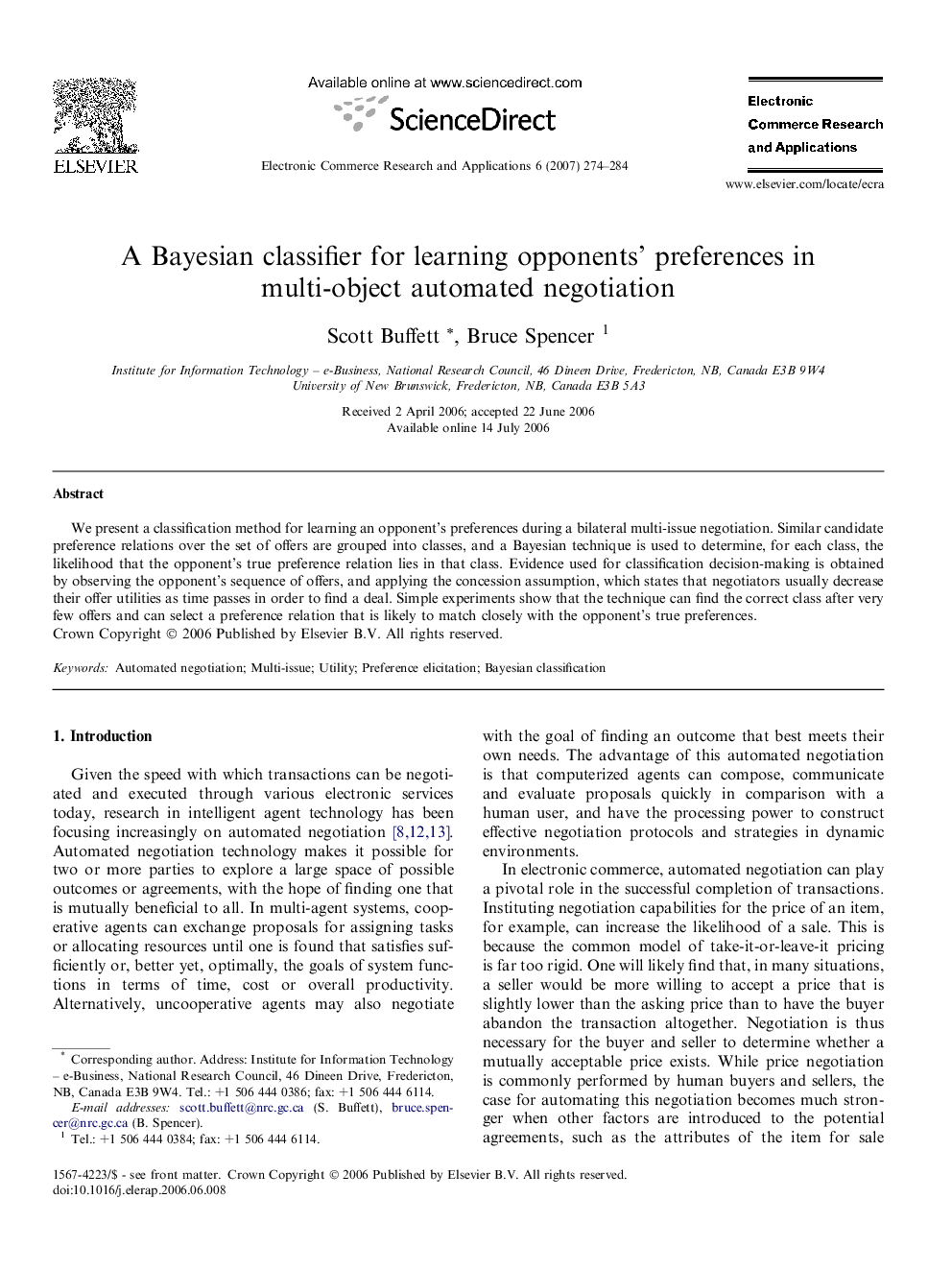| Article ID | Journal | Published Year | Pages | File Type |
|---|---|---|---|---|
| 380100 | Electronic Commerce Research and Applications | 2007 | 11 Pages |
We present a classification method for learning an opponent’s preferences during a bilateral multi-issue negotiation. Similar candidate preference relations over the set of offers are grouped into classes, and a Bayesian technique is used to determine, for each class, the likelihood that the opponent’s true preference relation lies in that class. Evidence used for classification decision-making is obtained by observing the opponent’s sequence of offers, and applying the concession assumption, which states that negotiators usually decrease their offer utilities as time passes in order to find a deal. Simple experiments show that the technique can find the correct class after very few offers and can select a preference relation that is likely to match closely with the opponent’s true preferences.
